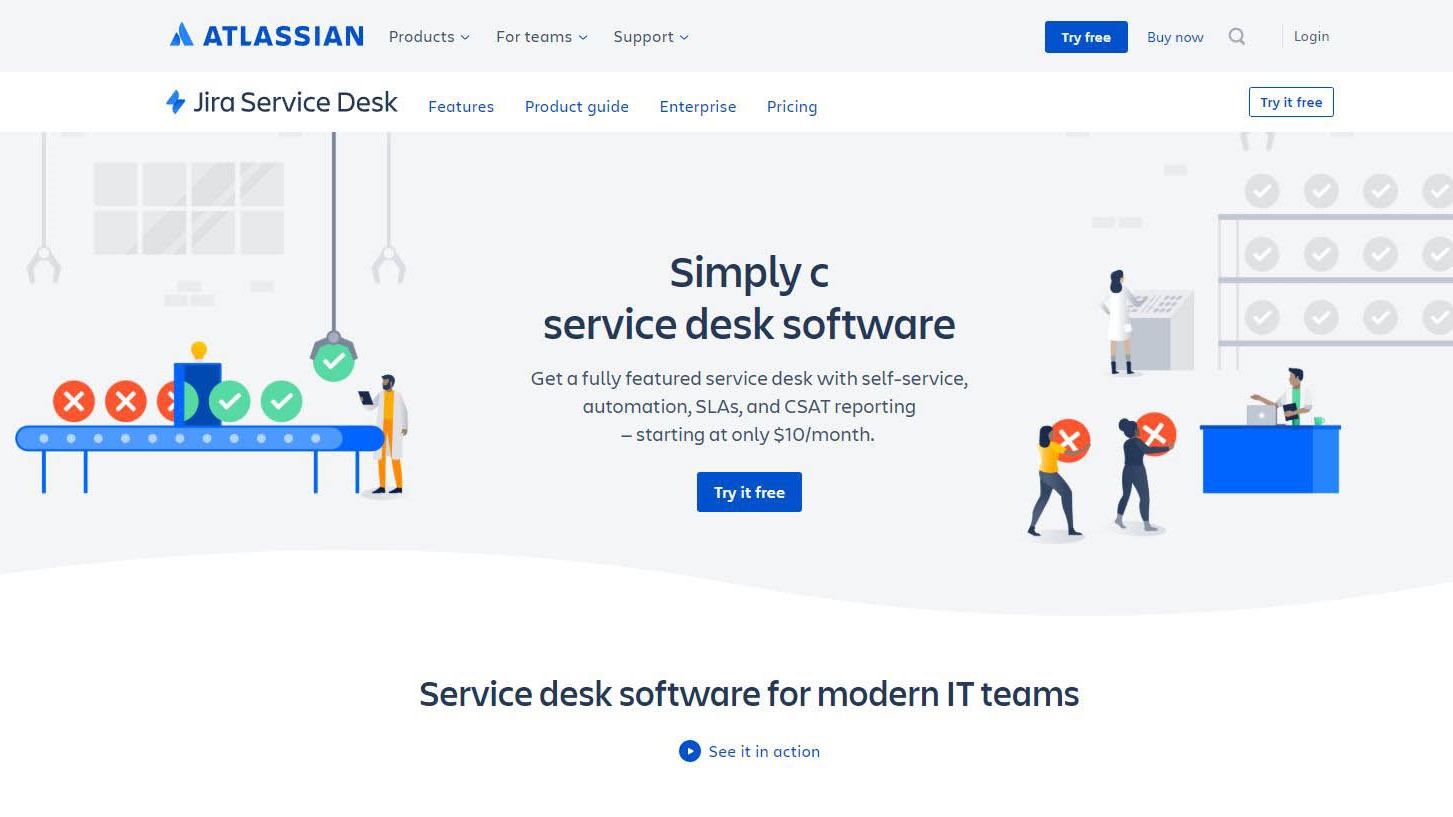TechRadar Verdict
Simple to deploy and highly customisable solution. But without extra product licensing, it lacks a knowledge base, full security or an asset register. Those that don’t embrace the whole Jira suite of tools won’t get the most out of Service Desk.
Pros
- +
Relatively cheap for high volume customers
- +
Excellent app marketplace
- +
Works seamlessly with other Jira software products
Cons
- -
No knowledge base included
- -
No asset register included
- -
Needs Atlassian Access for tighter security
Why you can trust TechRadar
Atlassian Corp is an Australian software company that was started by two university students back in 2002 using what they could borrow on a credit card. And, has since grown to employ 3,000 staff supporting 130,000 customers and millions of users.
The two most successful product lines are the Wiki collaboration and management tool Confluence, and the line of Jira issue tracking products.
Jira Service Desk is part of the latter collection and was constructed to support any modern IT team fielding customer requests and issues.
Starting at just $10 for three agents per month, is this the cost-effective ticketing system that many companies are trying to find?
- Want to try Jira Service Desk? Check out the website here
Features
A new customer coming to the Jira website might be confused about exactly the right software for them, as Jira Service Desk isn’t the only helpdesk solution that Atlassian sells.
It also has Jira Core and Jira Software, so let’s explain how these are different from Jira Service Desk.
Jira Core is a basic project management tool, aimed at helping an organisation implement change in a way where everyone understands the critical path and their part in it.
Jira Software is also a management tool, but this one is focused on software development and integrates the tools used in those processes with functionality to keep all the developers on a big project linked to other team members and their code.
Both these solutions are integrated to Jira Service Desk, although it can work independently, to field service requests, change, problem tracking and asset management that IT support staff are presented.
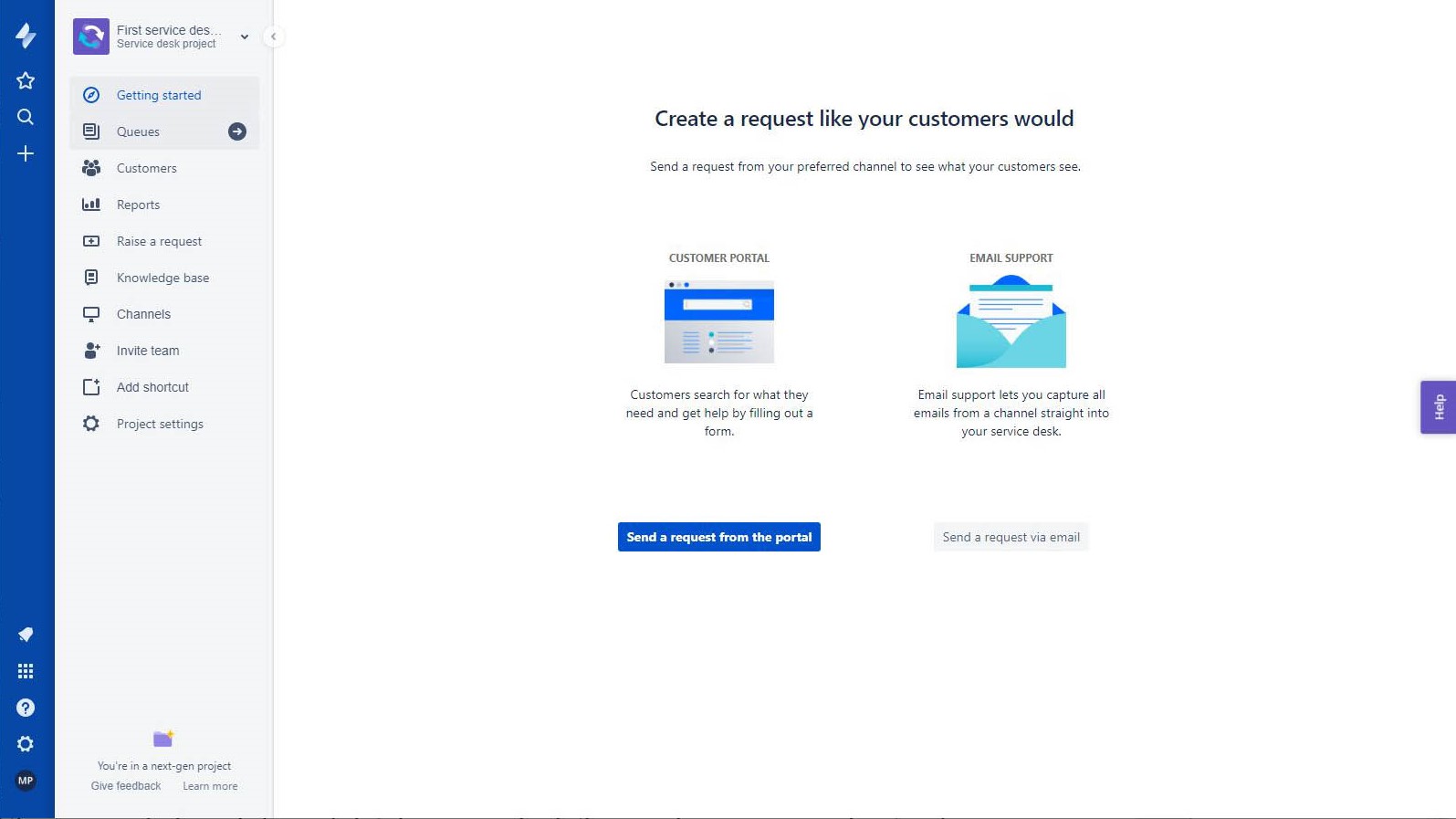
Like every helpdesk solution we’ve reviewed, this is a ticketing system that allows customers to make requests either through a software portal, email or phone call.
What Jira doesn’t actively support is social media, although we’re sure there are ways you could drive service requests from these channels by converting them into emails.
Tickets are pooled under Projects, allowing for multiple service contracts to be handled by the one system, and agents can then track and resolve tickets either manually or automatically allocated to them.
When you first install the system, it asks several critical questions about what type of support needed and how tickets are to be allocated. These choices enable some pre-configuration to the ticketing templates, but it is all changeable if those aren’t appropriate.
Service request types, agent roles, SLAs, workflows and a million other things can be edited easily by those with admin powers. And, you can control what permissions each user role or team they’re on have.
What isn’t included by default is a knowledge base for customers to help themselves before calling on an agent to handle their problem. This functionality exists but uses Jira’s Confluence software that must be licensed in addition to Jira Service Desk.
Many businesses use Confluence to document projects, define service agreements and track business processes, but it is an additional licensing cost that almost doubles the cost of using Jira Service Desk if all agents need to create knowledge base contents.
One very attractive feature is that Jira has an application Marketplace, allowing for extra code to be bolted on the Service Desk framework.
As the time of writing, there are 668 apps in the Atlassian Marketplace, providing all manner of enhancements and integrations with commonly used business applications.
Scripted automation, Gantt charts, asset management, embedded diagrams, the list of available extensions is practically endless.
For example; 29 apps exist to link Jira Service Desk to Google services and apps, and another 25 have been built to do the same for Microsoft technologies.
Some of these tools are nice-to-have and are free, and others, like Asset Management tools, come with a monthly additional cost overhead.
Without some apps, the functionality in Jira Service Desk would seem basic in places, but they add a high degree of customisation that goes well beyond aesthetics.
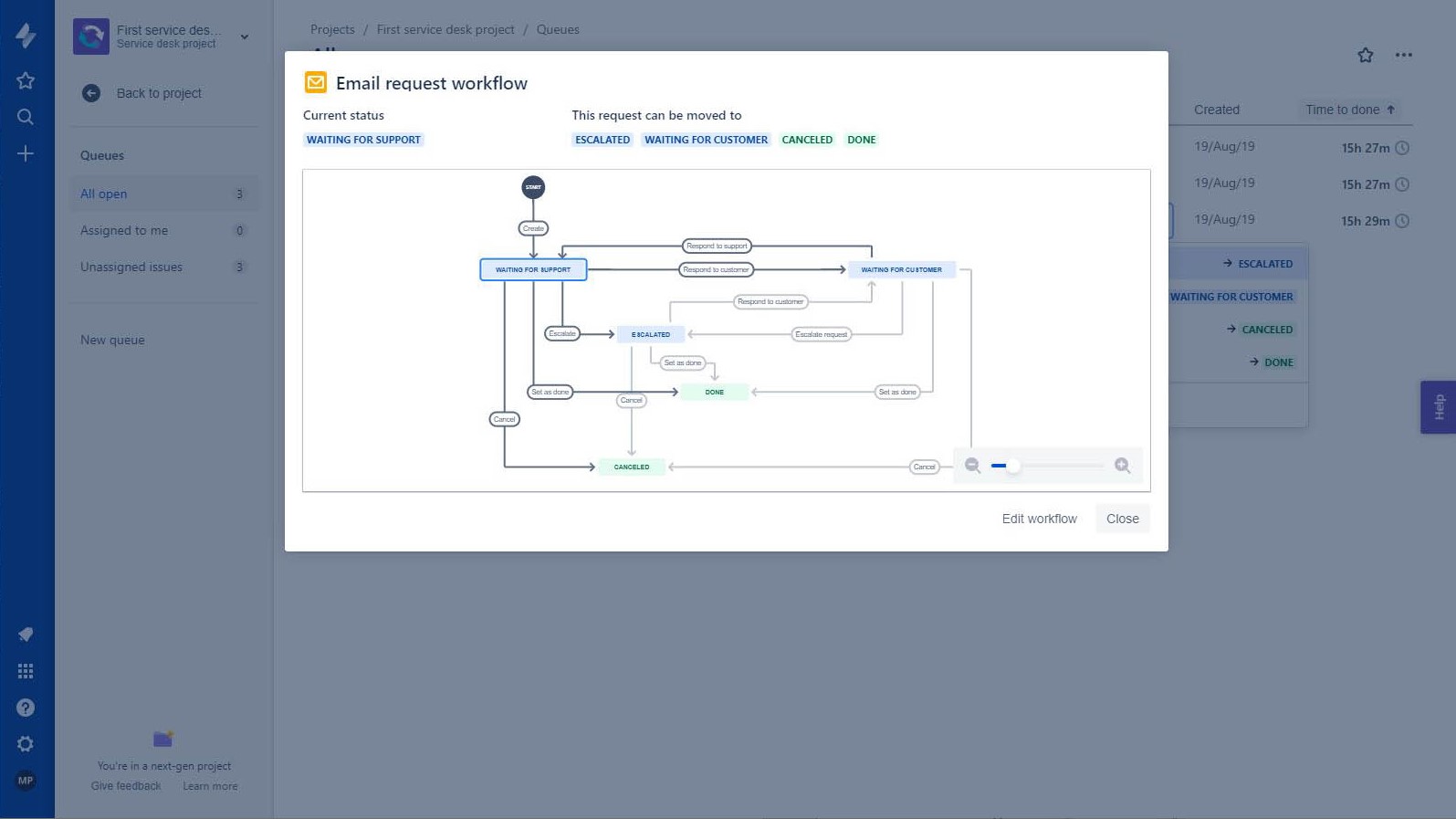
Interface
Jira has a very clean and attractive interface that takes the well-worn path of having hierarchical menus on the left and the contents on the right.
It’s generally very easy to follow, but to those who aren’t familiar with might encounter a few idiosyncrasies that could confuse them.
When in Jira Service Desk you will occasionally need to access settings or features that exist as part of the larger Jira Cloud service. And, selecting these can take you to a web page where there is no obvious way back to the top-level menu.
These can also have a very different visual style, highlighting that you’ve left the relative safety of Jira Service Desk behind.
That they are different is probably a good thing, but some anchor system to easily get back without using the browser history would be useful.
If the default interface isn’t in company colours, the administration login allows the look and feel of the product to be changed, adding colours, logos and icons of whatever style is required.
There isn’t anything revolutionary about the interface of Jira Service Desk, but it does the job adequately.
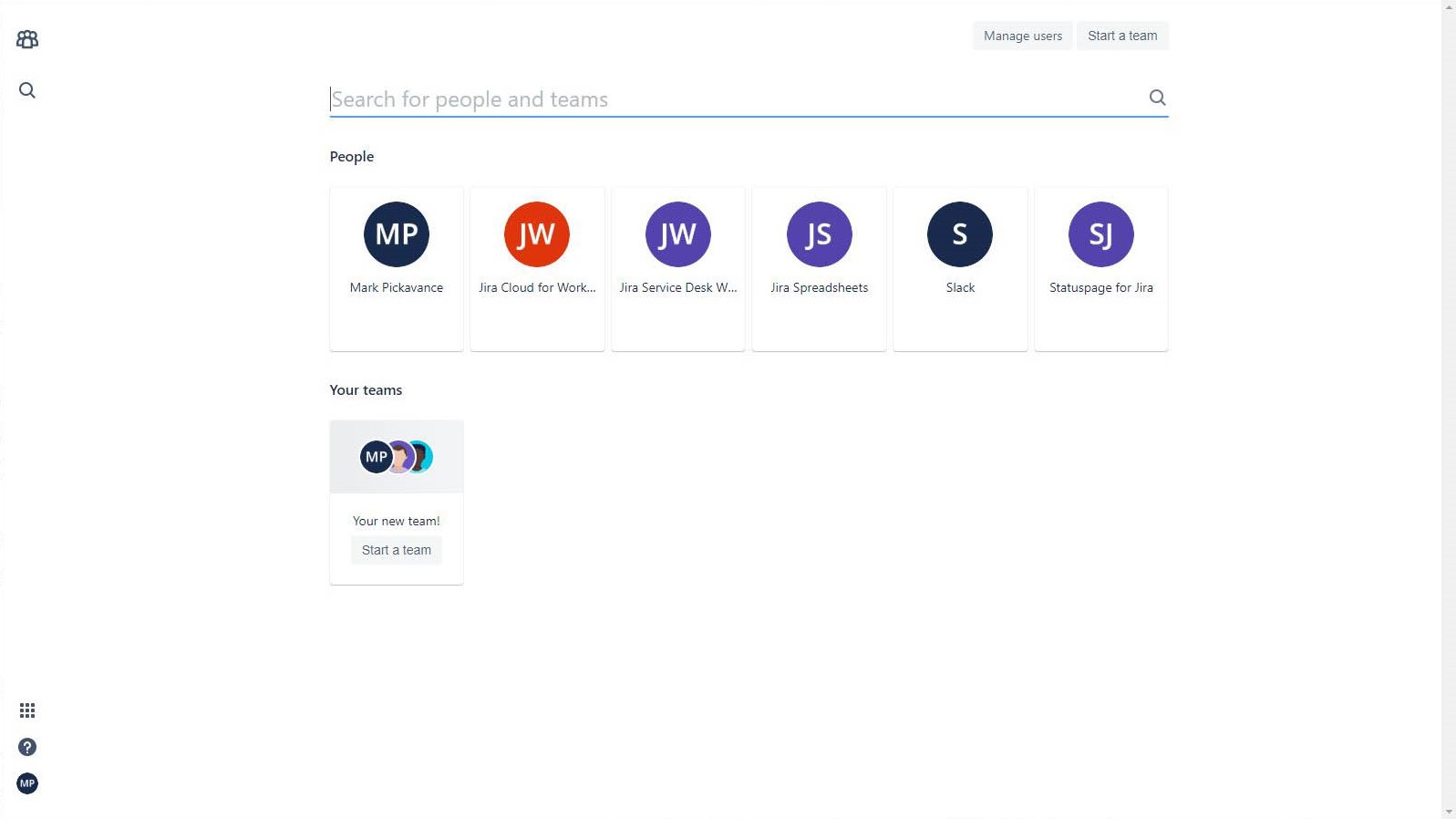
Security
When anyone assesses security, they have a list of features that they’d like to see offered, and Jira Service desk has most of those important features.
However, what you don’t get is SAML single sign-on, two-step verification, password policies, and user provisioning as standard.
To get any of those you need a license subscription to Atlassian Access, and for the first ten users that costs $30 per month, and then it works out at around $3 per agent above that volume.
This service controls access and security across all the Atlassian Cloud services, and it can be linked to Okta, Idaptive, Google Cloud Identity, Azure AD, Onelogin and ADFS.
But that to have anything more than password entry you are forced to add the cost of this service ramps rapidly. It also adds additional complexity to a situation where the customer might only want two-factor authentication, and nothing more.
That there aren’t any layers between the enterprise-grade security controls of Atlassian Access and the very basic ones offered by default are disappointing.
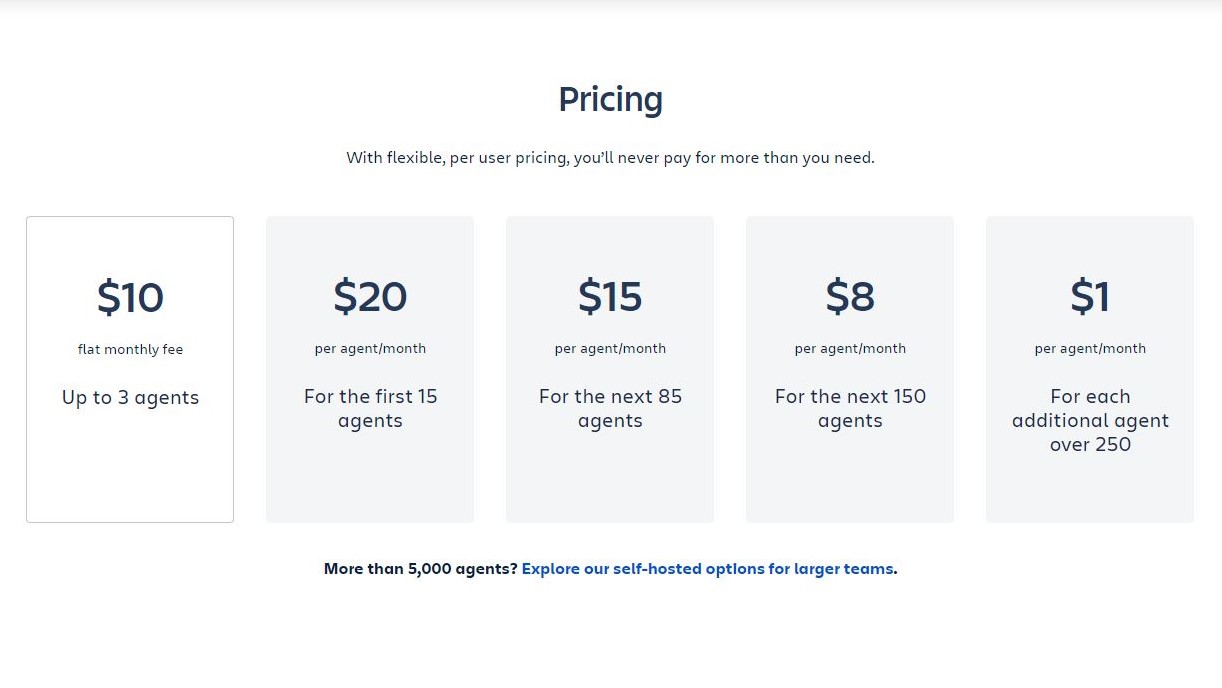
Plans and pricing
Jira Service Desk is aggressively priced to get businesses on board.
The biggest lure is the first three agents costs just $10 a month as a flat fee, but oddly it does get more expensive as it scales, initially.
The first 15 agents cost $20 per month if paid monthly. Above these numbers, the cost slides in the predictable direction, with 85 agents costing just $15, and 150, a highly affordable $8 each per month.
Once you get to $250, each extra agent costs just a dollar, and you can reduce the overall cost by taking an annual contract.
What’s important to realise is that all these tiers are concurrent, so if you have 60 agents, for example, you are billed for 15 at the $20 cost and then 45 at the $15 price tag.
This scheme avoids a scenario in the pricing model, where having more agents costs more per head overall. An issue that other vendors have created by accident.
If you want to use this solution alongside Jira Software, you’ll need licenses for both.
As we mentioned earlier, if you want more than basic security licenses for Atlassian Access will also be required.
And, if you want to create an extensive self-help system, you will also need Confluence licenses, and they start at another $5 per agent per month.
When you factor in training for the admins and agents at premium prices alongside the ongoing costs and a few paid-for apps from the Marketplace, the expenditure on this solution could undoubtedly require senior management approval.
We conclude that Jira Service Desk isn’t the bargain that $10 for three agents might signal, and this company would much rather deal with large software development or IT service companies than smaller businesses.
As part of that pitch, they also offer a customer server installed option for a single payment.
For 251+ agents this is $56,900, but you can have three agents for just $10 and fifty is $16,500. Alternatively, for those where downtime isn’t acceptable, they also have a datacentre option, priced on a yearly license that starts at $12,000 for 50 users.
Server installs have an ongoing maintenance cost (first year free), although this is included in the yearly cost of the datacentre.
These choices do enable enterprises greater control over their instances of Jira Service Desk, but depending on the number of agents, it can also be on the expensive side.
Final verdict
What we can’t deny is that the customer base for Jira Service Desk is generally very happy with this solution, even with a convoluted pricing scheme.
We’d recommend properly cost planning any deployment and subsequent phases, before investing time and resources on it.
For those that are looking to use other Jira products and services, this software is the obvious choice since it interlocks with Confluence and Jira Core perfectly.
Used in isolation this is still a decent solution and reasonably priced, but you don’t get the benefits of all the other Atlassian products.
For a small business that needs an IT helpdesk solution, the likes of Zoho and Happyfox offer more functionality for your money. Where Jira Service Desk might be ideal for larger businesses tracking software updates, squashing bugs and unexpected hardware problems.
- Also check out the best helpdesk software of 2019
Mark is an expert on 3D printers, drones and phones. He also covers storage, including SSDs, NAS drives and portable hard drives. He started writing in 1986 and has contributed to MicroMart, PC Format, 3D World, among others.
